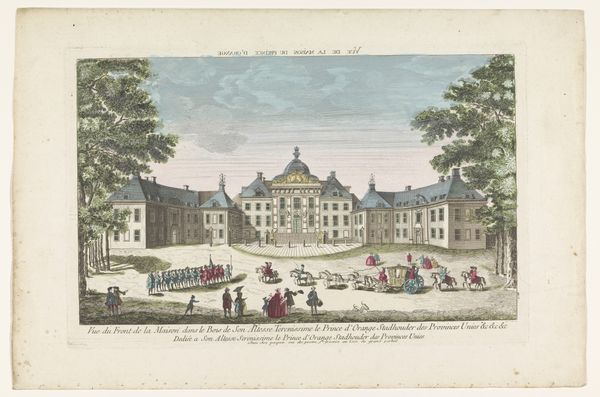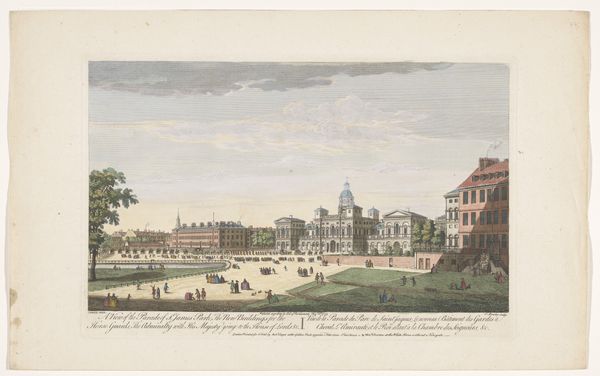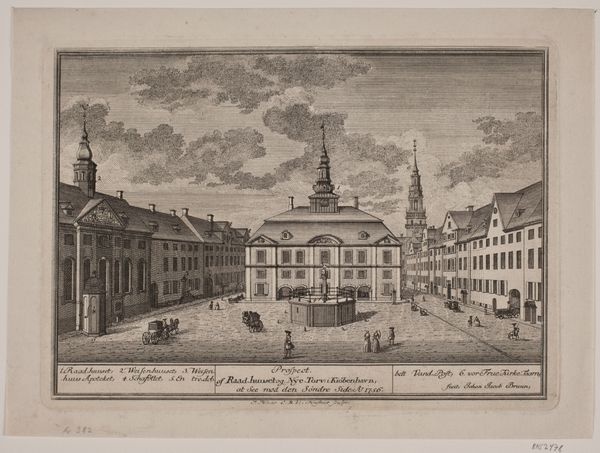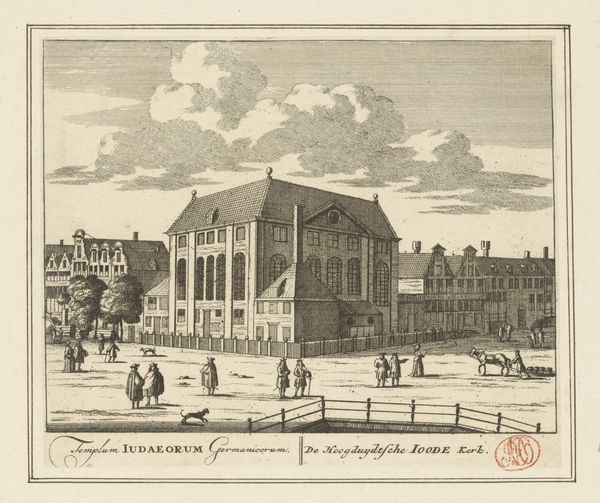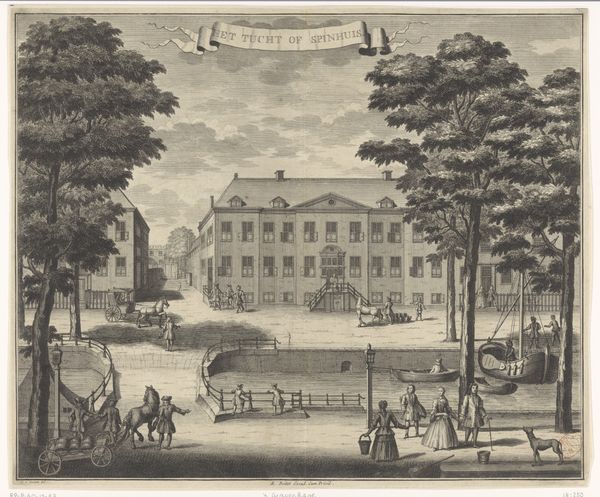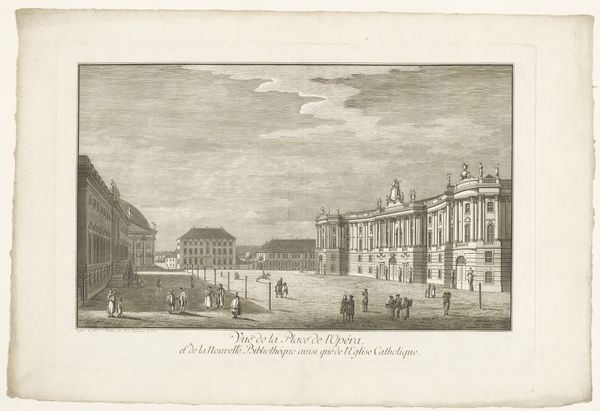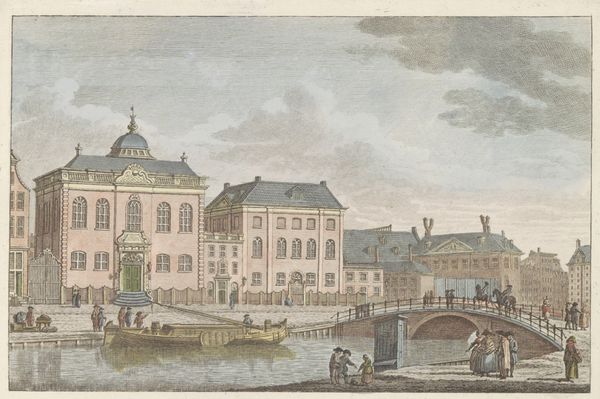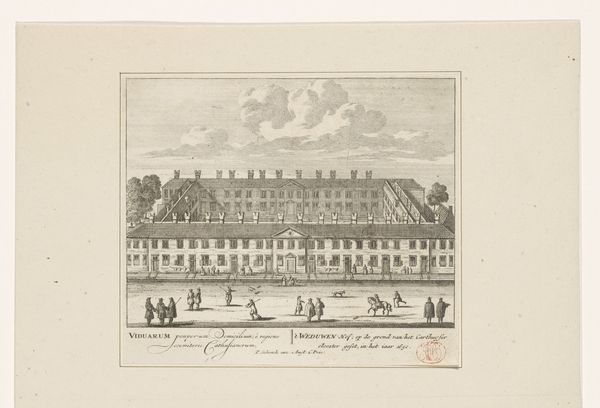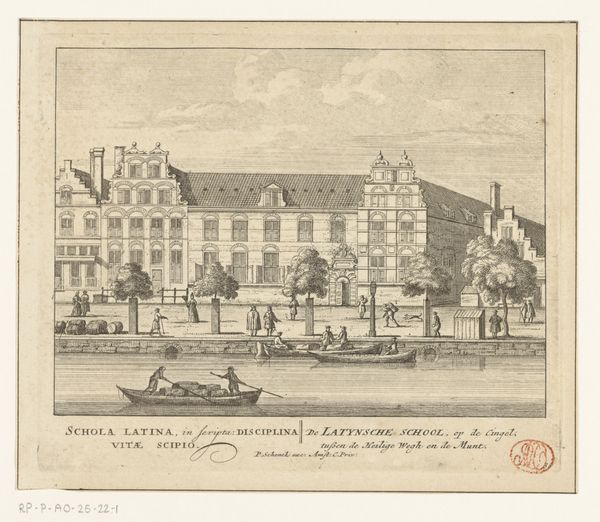
Gezicht op de voorzijde van het Paleis Huis ten Bosch te Den Haag 1734 - 1768
0:00
0:00
hendrikscheurleer
Rijksmuseum
drawing, painting, paper, watercolor
#
drawing
#
baroque
#
dutch-golden-age
#
painting
#
landscape
#
paper
#
watercolor
#
coloured pencil
#
cityscape
#
genre-painting
Dimensions: height 279 mm, width 399 mm
Copyright: Rijks Museum: Open Domain
Curator: Hendrik Scheurleer’s "View of the Front of Huis ten Bosch Palace in The Hague," dating from somewhere between 1734 and 1768, offers a fascinating look at this iconic structure. It’s crafted using watercolor and colored pencil on paper, currently held at the Rijksmuseum. Editor: My immediate response is of ordered calm, strangely mixed with an element of the performative. The architectural symmetry against the slightly theatrical presentation of the figures… It’s like a stage set! Curator: Precisely. Considering the context of its creation, it speaks volumes about power and its presentation. The very process of creating such a meticulously rendered image, and reproducing it for wider distribution, served to reinforce the prestige and visibility of the House of Orange during a tumultuous period. How was wealth and power displayed in materials accessible for the rising bourgeois consumer? Editor: Absolutely, and within that frame, consider the carefully positioned figures. Are they merely incidental? I don't think so. Their clothing, their interactions—they speak to class, to social performance, even to the ways in which gender roles were both prescribed and negotiated. Were marginalized communities deliberately left out of the frame or did they have some other presence in these displays of authority? Curator: That resonates deeply. Think about the production of colored pencils and watercolors themselves at this time. What was the origin of pigments? What were the labor conditions involved? What type of consumption habits made production like this thrive? Editor: Excellent point! It opens avenues for analyzing how global resources fueled such displays. And considering that this artwork would have likely circulated within specific elite networks raises complex questions of accessibility. It allows us to engage with power relations of the time in so many spheres, not just class. Curator: By understanding the material conditions of art making, the cost and rarity of these mediums for the time, it provides insight into the broader socio-economic framework in which it operated. These materials gave some groups access to privilege but systematically withheld access from others. Editor: Indeed. The calm of the scene is deeply ideological and constructed, and examining these power dynamics helps us understand whose stories are told, and whose are erased from the canvas, both literally and metaphorically. It shows who consumes, produces, benefits from luxury. Curator: A wonderful way to reconsider how we interpret this peaceful vista. Editor: It helps in reconsidering any "peaceful vista" throughout history. Thank you!
Comments
No comments
Be the first to comment and join the conversation on the ultimate creative platform.
